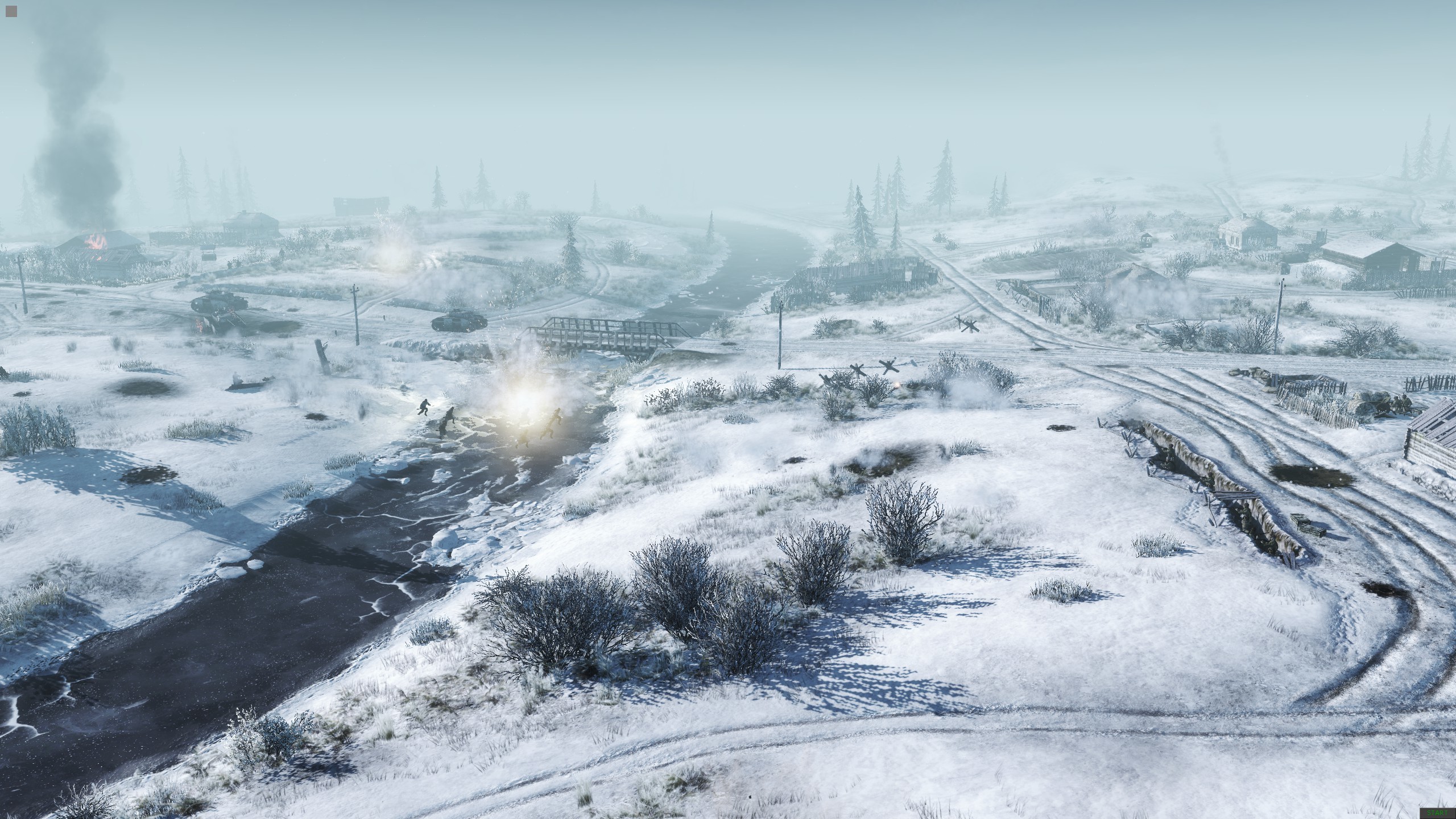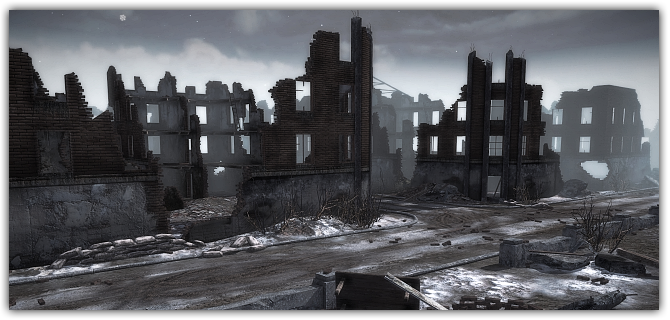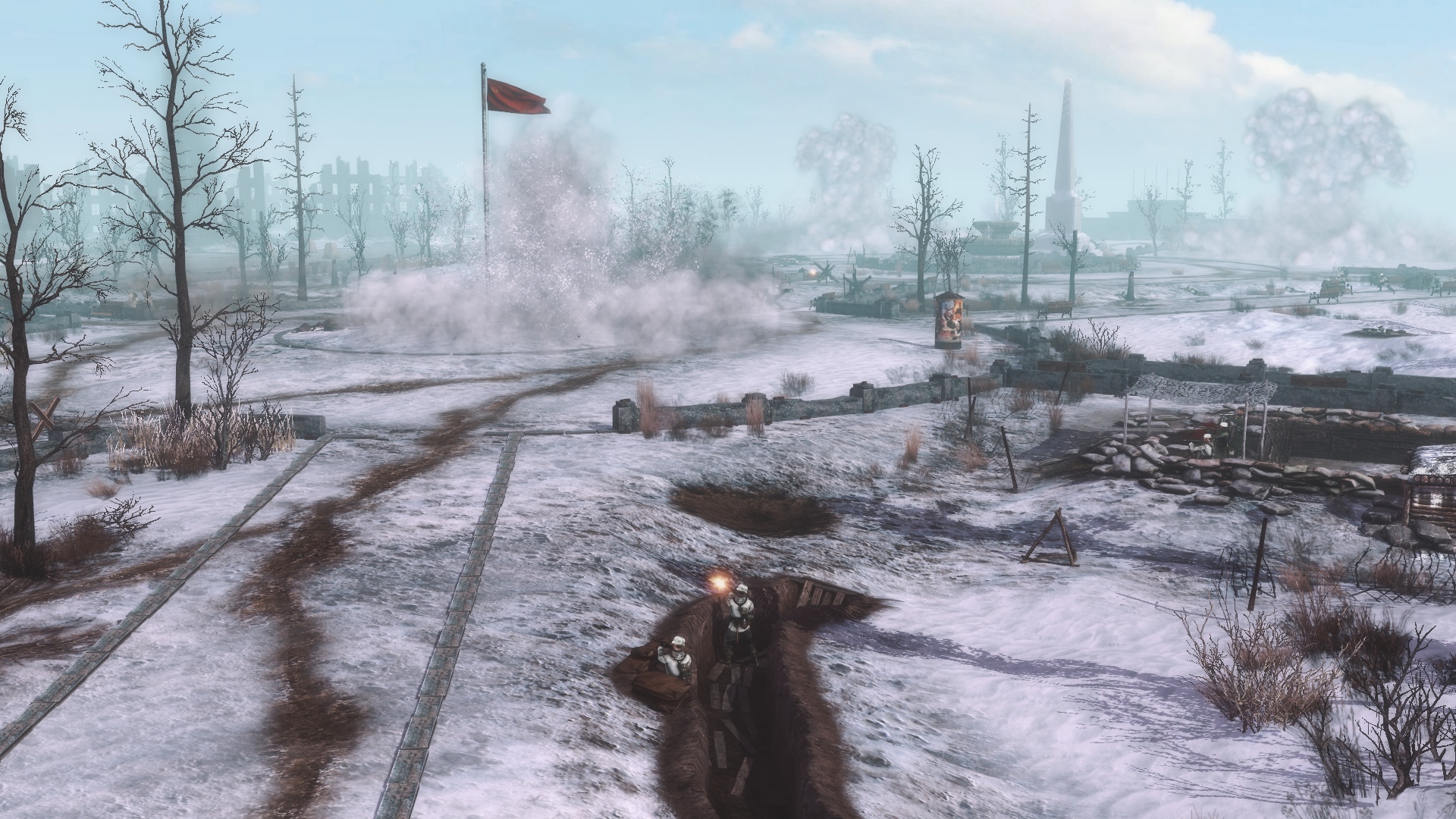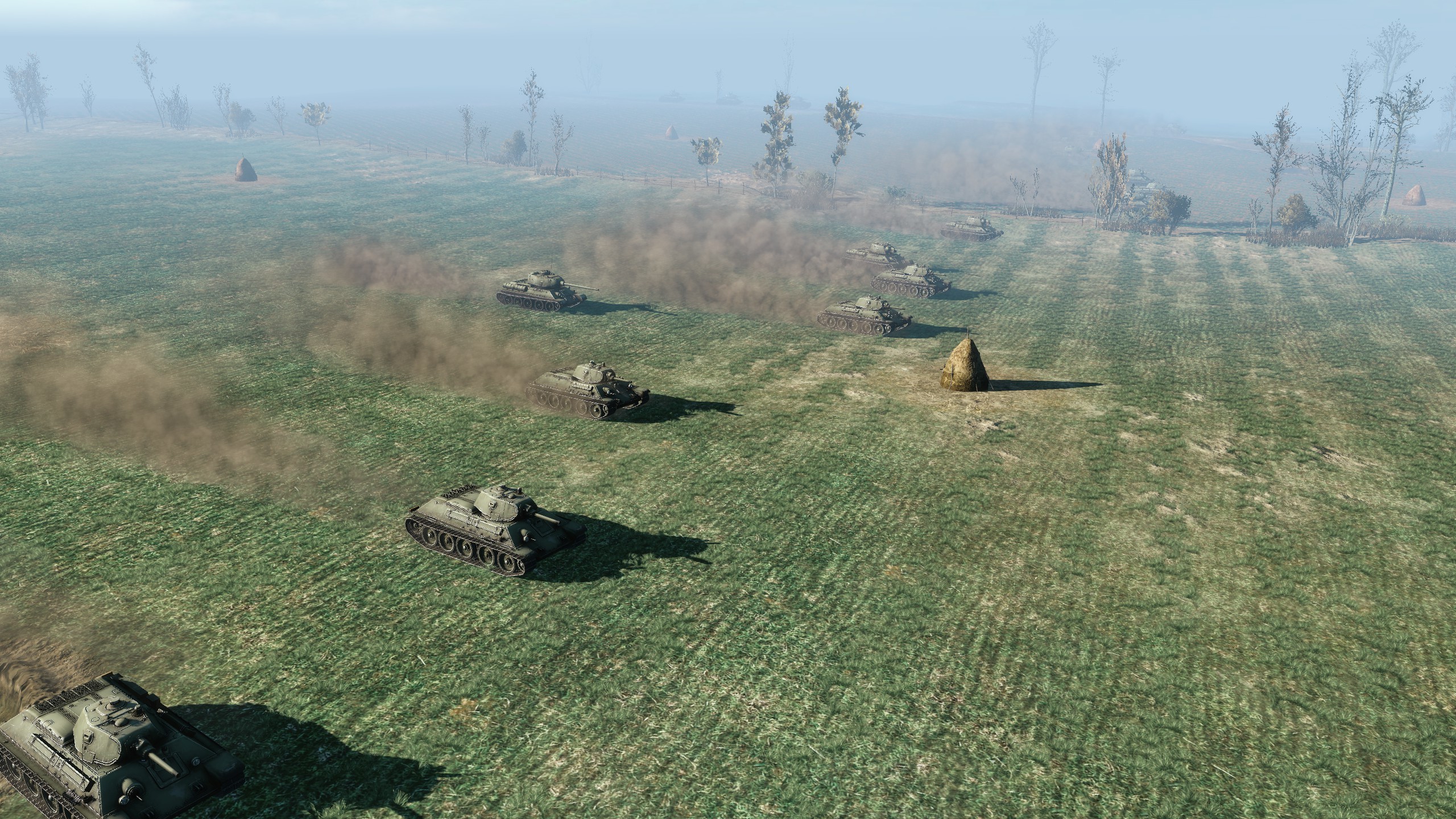
Mar 2, 2018
Call to Arms - Gates of Hell: Ostfront - Herr Flick

Hi everybody, it’s time for an update.
In this dev blog it’s about both Winter scenery and a map showing you how we use some of our assets to create a wintery atmosphere. We also want to show you part of our development to recreate operation “Wintergewitter”.
Freezing Scenery
When we consider winter scenery for the game, we want things to be realistic of course. The conditions and atmosphere can be found in photographs like the ones below.

These are good study material but they are static and there are no dynamic effects.
So we used some different sources to complement this and the result can be seen in these effects and textures (all work in progress):

What do you think about these? Do they meet your expectations?
Operation Wintergewitter
While we are showing you this content, we can reveal that we created a scenario with it!As you may know, Wintergewitter (winter storm) was an attempt by the German 4th Panzer Army under the command of Erich von Manstein to break the Stalingrad encirclement. On December 12th, 1942 when the German offensive started at Kotelnikovo, it was a surprise to Soviet high command and initial gains suggested the offensive might just be able to relieve the German 6th Army at Stalingrad. After some days, the Soviet 2nd Guards Army was sent to block the advance, which it did.

One of our campaign missions will take you to Gromoslavka, the village that marked the end of the German advance - only 48 kilometres from Stalingrad.
December 20th
The 6th Panzer division, under the command of Colonel von Hünersdorff, reaches the River Mishkova near Gromoslavka. There, the Germans run into the Second Guards Army streaming south across the bridge. Hünersdorff’s tanks are low on fuel and face a numerically superior enemy. Despite this, he deploys his tanks to engage the Soviets. As the German tanks and assault guns blaze away at the Soviet positions, a Panzergrenadier Regiment crosses the Myshkova and secures a small bridgehead. Hünersdorff quickly sends reinforcements across and expands the German hold to a perimeter of just a few kilometres.
The bitter fighting for the expansion of the bridgehead lasts from December 20 to 22.
December 23rd
The situation that develops makes further German attack risky; the connection to the bridgehead is under severe pressure and besides that, the situation to the rear of the battleground (south of Mishkova) is anything but stable. This is as far as “Wintergewitter” will get.
The 6th Panzer Army is not only blocked by the 2nd Guards Army after crossing the Mishkova, but there are all kinds of signs that the Soviets are readying themselves for a counterattack. German high command calls off Wintergewitter on the 23rd of December and all hope of rescue or relief for the German soldier in Stalingrad has now gone.

HD link
The Second Guards Army crosses the Mishkova river by night to engage the German attack. Hours later, the bridge is fiercely disputed.

HD link
After the battle at the south part of the village, the fight for the Gromoslavka bridge takes centre stage.

HD link
Gromoslavka. Note the icicles on the roof edges.
Did you know:
- One of the untold reasons why Wintergewitter failed was that the German reinforcements dispatched to von Manstein were exhausted from fighting in the “Rzhev Meat Grinder” near Moscow during Operation Mars. In this way, the heavy Soviet losses at Rzhev contributed significantly to the tactical victory at Stalingrad.
- Likewise, the quick gains made by von Manstein in the second week of the offensive were in part due to Soviet forces suffering from exhaustion after already having fought for weeks.
NOW: Back to our development, we have some questions for you!
- When you look at these assets and imagine the wind blowing across at -30 celsius and the snow blowing in your face, can you feel it too?
- Looking at the new map and scenario, what do you think?
We hope you liked today´s dev blog topic and we thank you for all your input that brings important infos to us to improve ourself and the game!






















